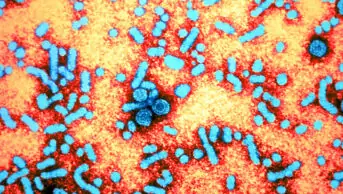
CDC/Melissa Dankel
The rate of Clostridium difficile infections in England has decreased by around 80% over 10 years since the introduction of policies advocating improved infection control and restricted antibiotic use. However, it is unknown which of these interventions contributes the most to C. difficile control.
To investigate, researchers combined regional and national data on C. difficile incidence and antimicrobial prescribing data over a 16-year period with genome sequence data from C. difficile isolates.
The team found that the observed decline in C. difficile rates in England was almost entirely due to the disappearance of fluoroquinolone-resistant isolates, while the transmission of non-resistant strains remained unchanged or even increased.
Writing in The Lancet Infectious Diseases
[1]
( online, 24 January 2017), the team say the results show that restricting fluoroquinolone use should be central to any C. difficile control programme, particularly when fluoroquinolone-resistant strains are prevalent.
References
[1] Dingle KE, Didelot X, Phuong Quan T et al. Effects of control interventions on Clostridium difficile infection in England: an observational study. Lancet Infectious Diseases 2017; doi: 10.1016/S1473-3099(16)30514-X


